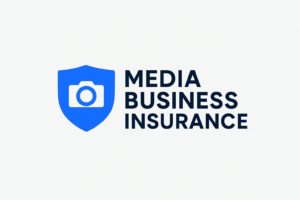Cyber Threats Every Media Business Should Know – Protecting Your Digital Assets
In the fast-paced world of media, businesses are constantly navigating the digital landscape to stay competitive and relevant. As a media business, whether you’re a media agency, publisher, or content creator, your digital assets are crucial to your success. However, with the increased reliance on technology, the risk of cyber threats looms larger than ever before. It is vital for media businesses to understand the different types of cyber threats they may face and how to protect their valuable data and resources. In this blog post, we’ll discuss the most common cyber threats every media business should know and how Media Business Insurance can help safeguard your operations.
1. Phishing Attacks
Phishing attacks are one of the most common forms of cybercrime. In a phishing attack, cybercriminals trick individuals into revealing sensitive information such as login credentials, financial data, or personal details by posing as trusted entities. These attacks often come in the form of deceptive emails or fake websites. Media businesses, which rely heavily on email communication and online platforms, are prime targets for these kinds of attacks.
How to Protect Your Business:
-
Educate your employees on identifying suspicious emails and links.
-
Implement multi-factor authentication (MFA) to add an extra layer of security.
-
Regularly update and patch your systems to reduce vulnerabilities.
2. Ransomware
Ransomware is a type of malicious software that locks access to your data or entire systems, demanding payment in exchange for restoring access. Media businesses that handle sensitive information, including intellectual property, are attractive targets for cybercriminals using ransomware. A successful ransomware attack can lead to significant financial losses, operational downtime, and reputational damage.
How to Protect Your Business:
-
Keep regular backups of your data to ensure you can recover it if attacked.
-
Use robust cybersecurity software to detect and block ransomware threats.
-
Train staff to avoid clicking on suspicious links or downloading untrusted files.
3. Data Breaches
Data breaches occur when unauthorized individuals gain access to sensitive information, such as customer details, financial records, or intellectual property. Media businesses are often at risk of data breaches because they handle large volumes of valuable content and personal data. A data breach can lead to identity theft, financial fraud, and a loss of customer trust.
How to Protect Your Business:
-
Encrypt sensitive data both in transit and at rest to prevent unauthorized access.
-
Implement strict access control measures, limiting data access to only those who need it.
-
Regularly audit your data security practices and systems.
4. Denial-of-Service (DoS) Attacks
A Denial-of-Service (DoS) attack floods a server, network, or website with an overwhelming amount of traffic, causing it to crash and become unavailable. For media businesses, an extended DoS attack can result in significant downtime, which can disrupt your ability to publish content or deliver services to your audience.
How to Protect Your Business:
-
Use a content delivery network (CDN) to distribute traffic across multiple servers.
-
Implement network monitoring tools to detect and mitigate unusual traffic spikes.
-
Consider partnering with a cybersecurity provider to deploy firewalls and DoS protection.
5. Social Engineering
Social engineering attacks manipulate people into divulging confidential information by exploiting psychological vulnerabilities. These attacks can be carried out through phone calls, emails, or social media. Media businesses that handle high-profile clients or sensitive media content can be particularly vulnerable to social engineering tactics.
How to Protect Your Business:
-
Train employees to recognize common social engineering tactics and how to respond.
-
Establish strong internal communication channels for verifying requests for sensitive information.
-
Encourage a culture of skepticism and caution around unsolicited contact.
6. Insider Threats
Insider threats occur when employees, contractors, or business partners intentionally or unintentionally compromise your company’s security. These threats can be particularly dangerous for media businesses that handle confidential materials, creative content, and client information. Disgruntled employees or careless staff members can leak, steal, or damage valuable data.
How to Protect Your Business:
-
Implement strict data access policies and ensure employees only have access to the data they need.
-
Regularly monitor employee activity on internal systems and networks.
-
Conduct thorough background checks on new hires and contractors.
7. Malware and Spyware
Malware, including spyware and adware, is software designed to harm or exploit your systems and networks. Spyware can secretly monitor your business activities, stealing confidential data and credentials without your knowledge. Media businesses, which handle valuable content, are attractive targets for malware attacks.
How to Protect Your Business:
-
Install and update reputable antivirus and anti-malware software.
-
Encourage employees to use strong passwords and change them regularly.
-
Conduct regular security audits to identify vulnerabilities in your network.
The Importance of Cybersecurity Insurance for Media Businesses
As cyber threats become more sophisticated, protecting your media business with cybersecurity insurance is more important than ever. Media Business Insurance can help safeguard your company’s digital assets by covering costs related to cyberattacks, including legal fees, data recovery, business interruption, and more. By investing in a robust cybersecurity insurance policy, you ensure that your business is financially protected in the event of an attack.
FAQs about Cyber Threats for Media Businesses
1. What is the most common cyber threat to media businesses? Phishing attacks are the most common cyber threat to media businesses. They involve cybercriminals posing as trusted entities to steal sensitive information such as login credentials.
2. How can I protect my media business from a ransomware attack? To protect your business from ransomware, regularly back up your data, use robust cybersecurity software, and educate your employees on how to avoid suspicious emails or files.
3. Are data breaches a major concern for media companies? Yes, data breaches are a significant concern for media companies as they often handle sensitive information such as customer data, intellectual property, and content. Encrypting data and implementing strict access controls can help mitigate this risk.
4. How do Denial-of-Service attacks affect media businesses? DoS attacks can make your website or online platform unavailable to users, leading to downtime and disruption of services, which can negatively impact your business operations and reputation.
5. What is cybersecurity insurance, and why do media businesses need it? Cybersecurity insurance helps protect businesses from financial losses due to cyberattacks. It covers costs related to legal fees, data recovery, and business interruption, making it a crucial safety net for media businesses facing cyber threats.
Conclusion
As a media business, the digital landscape offers numerous opportunities for growth and expansion, but it also exposes you to a variety of cyber threats. By understanding the risks associated with phishing, ransomware, data breaches, DoS attacks, and more, you can take proactive measures to protect your digital assets and ensure your business continues to thrive. Additionally, having a robust cybersecurity insurance policy from Media Business Insurance will help you stay protected in case the worst happens, allowing you to focus on what truly matters—creating and delivering valuable content. Stay informed, stay secure, and keep your media business safe from evolving cyber threats.


